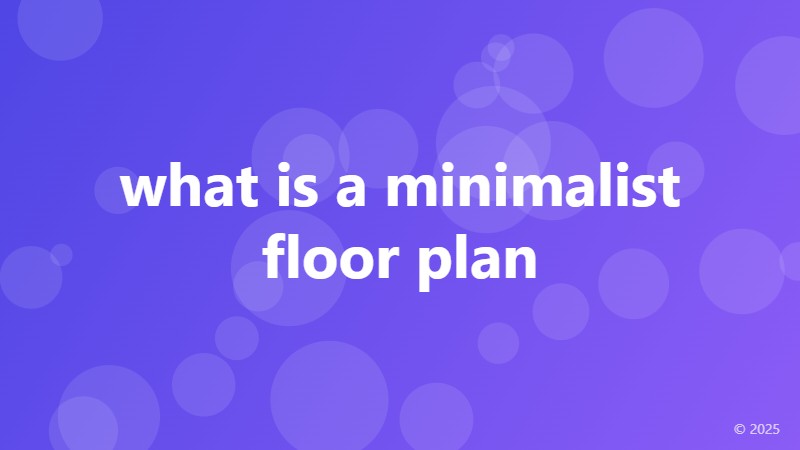what is a minimalist floor plan

When it comes to designing a home, one of the most crucial aspects to consider is the floor plan. A well-thought-out floor plan can make a significant difference in the functionality, aesthetic appeal, and overall livability of a space. In recent years, the concept of a minimalist floor plan has gained popularity, particularly among those who value simplicity, efficiency, and sustainability. But what exactly is a minimalist floor plan, and how can it benefit homeowners?
The Principles of a Minimalist Floor Plan
A minimalist floor plan is characterized by a focus on simplicity, clean lines, and an emphasis on functionality. It's about stripping away unnecessary elements and creating a sense of openness and flow. This design approach is rooted in the idea that less is more, and that a clutter-free environment can lead to a clearer mind and a more peaceful living space.
In a minimalist floor plan, you're unlikely to find intricate architectural details, ornate furnishings, or excessive ornamentation. Instead, the focus is on clean lines, minimal ornamentation, and an emphasis on natural light. This results in a space that feels calm, serene, and easy to navigate.
Key Features of a Minimalist Floor Plan
So, what are the key features of a minimalist floor plan? Here are some of the most common characteristics:
Open Spaces: Minimalist floor plans often feature open-plan living areas, where the kitchen, dining, and living spaces flow seamlessly into one another. This creates a sense of spaciousness and makes the most of natural light.
Simple Shapes: Minimalist designs often incorporate simple shapes, such as rectangles, squares, and triangles, to create a sense of harmony and balance.
Monochromatic Color Schemes: A minimalist floor plan often features a monochromatic color scheme, with a focus on neutral tones such as white, gray, and beige. This creates a sense of calmness and serenity.
Functional Furniture: Furniture in a minimalist space is often functional and multi-purpose, with an emphasis on simplicity and clean lines.
The Benefits of a Minimalist Floor Plan
So, why are minimalist floor plans so popular? Here are just a few of the benefits:
Increased Sense of Space: By removing clutter and unnecessary elements, a minimalist floor plan can create a sense of openness and flow, making even the smallest spaces feel larger.
Improved Functionality: A well-designed minimalist floor plan can improve the functionality of a space, making it easier to move around and use the available space efficiently.
Reduced Maintenance: With fewer decorative elements and less clutter, a minimalist floor plan requires less maintenance and upkeep, freeing up time and energy for more important things.
Enhanced Sustainability: By using sustainable materials, minimizing waste, and optimizing natural light, a minimalist floor plan can be a more environmentally friendly option.
In conclusion, a minimalist floor plan is a design approach that values simplicity, functionality, and sustainability. By incorporating simple shapes, monochromatic color schemes, and functional furniture, homeowners can create a space that feels calm, serene, and easy to navigate. Whether you're building a new home or renovating an existing one, a minimalist floor plan is definitely worth considering.